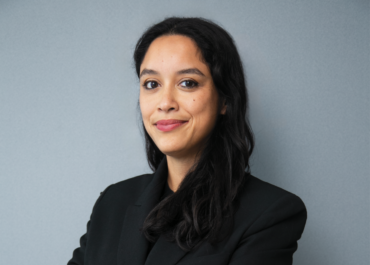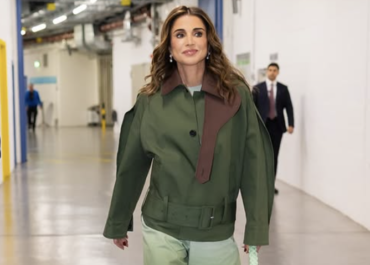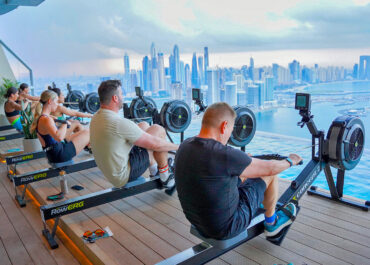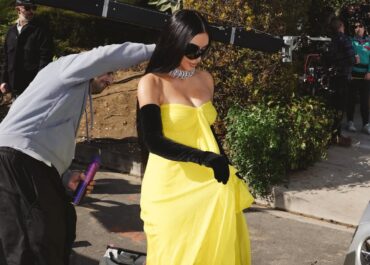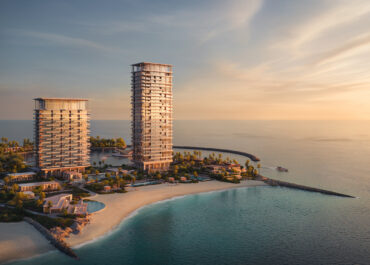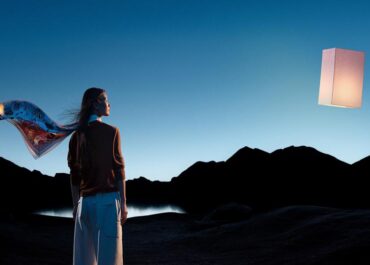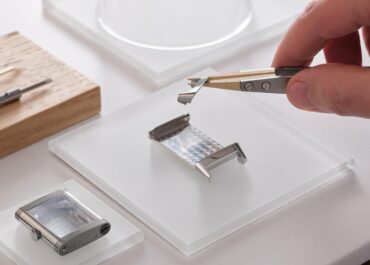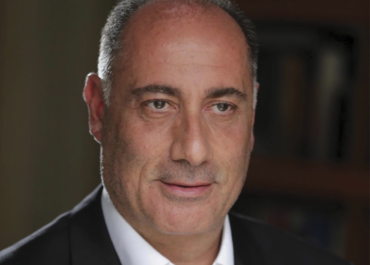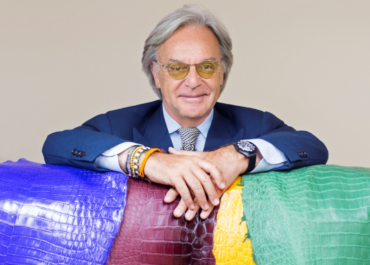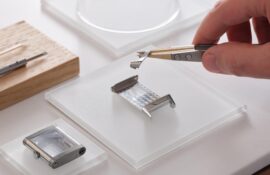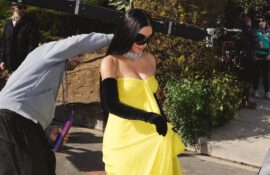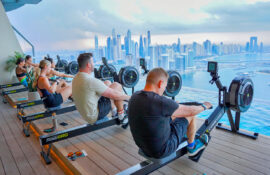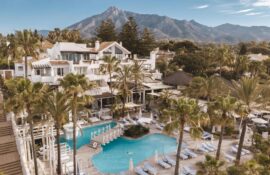As Dubai continues to define itself as a global capital of creativity, innovation, and culture, each November, the Dubai Design District (d3) transforms into an open-air laboratory of ideas for Dubai Design Week.
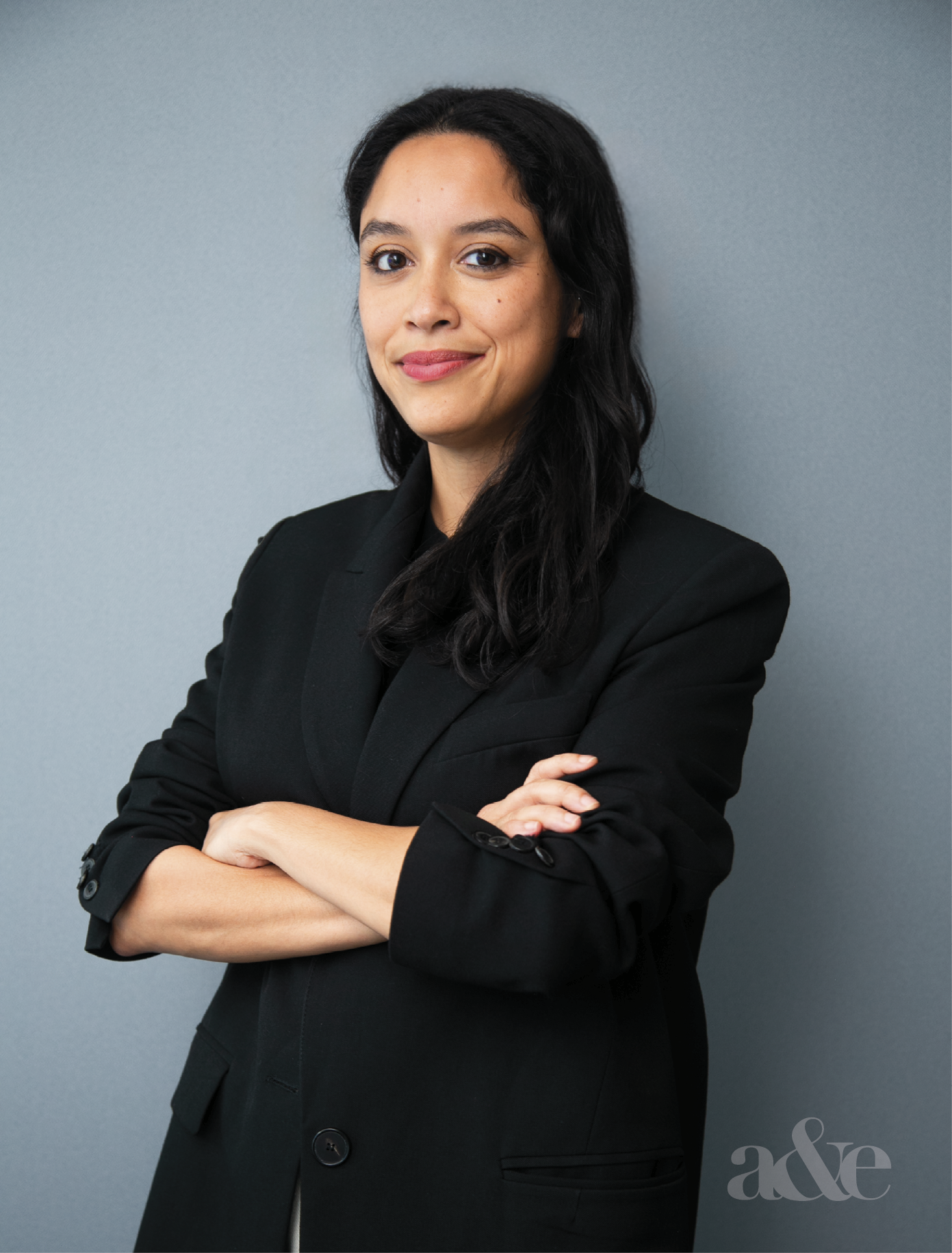
Natasha Carella, Director of Dubai Design Week
A platform where craftsmanship meets technology, and where voices from across the Middle East and beyond come together to reimagine what design can do. Now in its 11th edition, taking place from November 4–9, Dubai Design Week 2025 promises to be one of its most ambitious yet. Across installations, exhibitions, and performances, the event reflects a city and a region in constant creative dialogue with the world. From architecture and product design to digital innovation and sustainability, the week celebrates the power of design as both cultural expression and social catalyst.
At the helm of this evolution is Natasha Carella, Director of Dubai Design Week, who brings an international perspective shaped by years in the art, culture, and design industries. Her vision for this year’s edition goes beyond aesthetics; it’s about amplifying authentic voices, deepening cross-cultural collaborations, and positioning Dubai as a hub where ideas from the Global South meet the creative energy of the world.
This year marks another exciting edition of Dubai Design Week. What can visitors expect from the 2025 programme, and what ideas are shaping this edition?
Each year, Dubai Design Week evolves while maintaining its core pillars. For 2025, we’re welcoming over 1,000 architects, designers, and creatives from around the world. Visitors can expect five exhibitions, over 30 large-scale installations, and a range of special commissions and activations throughout d3. The fair will once again host Downtown Design and Editions, both of which remain cornerstones of the week.
What’s particularly exciting is the collaborative energy this year. The UAE, by nature, is a place where crossovers happen organically, between disciplines, between cultures, and between ideas. That spirit of openness and exchange is very much at the heart of this edition.
We’ve also introduced the d3 Awards, a new initiative that provides AED100,000 in funding to support emerging designers, offering meaningful recognition and opportunity. Alongside that, we’ve expanded our workshop and masterclass programming to give the public access to leading academics, designers, and cultural institutions, ensuring that Dubai Design Week continues to serve both professionals and the community at large.
In terms of curation, we don’t work with an overarching theme. Design is such a vast field — spanning everything from architecture and urban planning to graphic design and digital innovation — that it’s impossible to capture it under one phrase. Instead, we take a principled approach to programming: ensuring that every project we feature is original, high-quality, and representative of the diverse creative voices that define this region and the wider Global South.
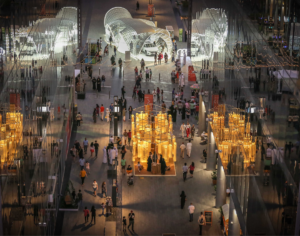
The event has always been known for its immersive installations and multidisciplinary approach. How are you expanding the experience this year?
We’ve made a conscious effort to broaden cultural representation, especially from Africa and East Asia. For example, we’re working with Bootleg Griot, a collective that curates African literature and printed media. They’re bringing their public library to life through performances, talks, and workshops, turning it into an active space for dialogue.
We’re also placing greater emphasis on access and inclusivity. The goal is to make Dubai Design Week not just a showcase, but a living platform for exchange, a place where anyone, from a student to a design professional, can participate, learn, and connect.
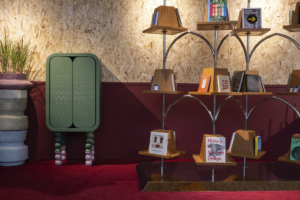
What are some of the standout installations or exhibitions to look out for?
There are several exciting installations this year. One of my favourites is a collaboration between Nick and Seke, the architects behind Zabeel One, and a historic Japanese family of woodworkers who have been practising their craft for centuries. Together, they’ve created a pavilion entirely from wood, inspired by ancient joinery techniques, paired with a live tea ceremony. A beautiful example of how craftsmanship, architecture, and ritual can come together in one space.
We’re also showcasing Art Collective, a group of young designers who met while studying at the Dubai Institute of Design and Innovation (DIDI). They’ve developed Date Crete, a sustainable material made from UAE sand and date seeds — a low-carbon alternative that reflects how design can be rooted in local materials and innovation. It’s incredible to see work like this, designed and produced entirely in the UAE, entering the global design conversation.
In addition, the d3 Architects Exhibition, in partnership with the Royal Institute of British Architects (RIBA), will explore the theme of community. It brings together international names such as Zaha Hadid Architects and Foster + Partners, alongside regional practices, to examine how architecture shapes collective experience.
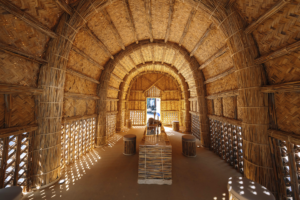
The event continues to attract global attention. How do you balance showcasing international design excellence while championing regional and local creativity?
For us, it’s about creating a natural dialogue. Dubai Design Week has become a key moment in the global design calendar, but at its core, it’s a gathering of ecosystems. It brings together universities, cultural institutions, and design businesses, both regional and international, in a way that feels collaborative rather than competitive.
We’re proud to have ongoing relationships with other design events in the region, like Design Doha and Ithra’s Saudi Design Week. These initiatives are strengthening the regional design network, and we’re supportive of each other’s growth. I often say, people assume the market is saturated, but in reality, we need more of these platforms. Just look at London; there are dozens of design events happening year-round. For the Middle East, each new initiative adds depth and opportunity.
How has Dubai’s design scene evolved in recent years?
If you look back a decade ago, design in Dubai was still quite import-driven — in both product and philosophy. Today, there’s a real shift toward building from within. We’re seeing more designers experimenting with materials and manufacturing processes developed locally. There are around 10 to 15 new materials now being produced in Dubai, including innovative bio-composites and sustainable alternatives to leather and concrete.
What’s equally exciting is the mindset shift. Designers are no longer confined to expressing identity through stereotypical regional symbols or motifs. There’s a sense of creative freedom, a belief that work can be global in language yet authentic to its context. A designer from the UAE can now create something that speaks universally without having to reference falcons or sand dunes. That confidence and nuance mark a new maturity in the regional design scene.
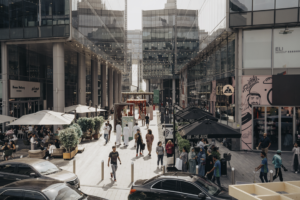
How is Dubai Design Week shaping the identity of Middle Eastern design, and what defines the regional aesthetic today?
When Dubai Design Week began ten years ago, it was a relatively small event of around 30 exhibitors and 20,000 visitors. Today, it’s the largest and longest-running design week in the Middle East, drawing over 150 exhibitors and more than 100,000 visitors annually. That growth reflects not just the city’s development, but the evolution of design thinking across the region. What defines the regional aesthetic today is dialogue between tradition and modernity, between sustainability and luxury, and between local heritage and global innovation.
Design in the Middle East is increasingly being used as a tool for problem-solving. It’s not only about form and function, but also about addressing environmental, social, and technological challenges. We’re seeing designers explore themes like AI and authorship, cultural preservation through materiality, and design for wellbeing.
We’re also looking outward, expanding partnerships with designers and institutions across East Asia and the wider Global South. The aim is to strengthen this global network of creatives who are redefining design beyond the traditional Western canon.
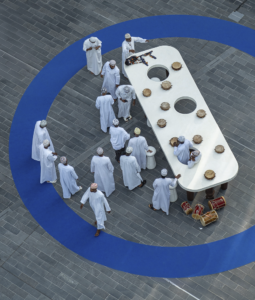
Who are some designers or highlights we shouldn’t miss this year?
One of our flagship initiatives, Abwab, returns this year with the theme Ornamentalism. It’s an open call inviting designers from Asia and Africa to create new commissions that explore craftsmanship and cultural storytelling. This year’s project by Mirage Studio — the Bahraini duo Latifa and Mariam — is a standout. They’re creating a 25-metre embroidered installation inspired by the forgotten island of Nabil Saleh, weaving together its ecological and oral history through intricate craftsmanship.
We’re also seeing exciting brand collaborations. Jaeger-LeCoultre will present a multidisciplinary activation with Filipino illustrator Aaron Amar, Emirati architect Abdullah Muller, and French chef Yann Couvreur, inspired by the geometry and light of the Reverso watch. It’s a beautiful expression of cultural exchange, where design, gastronomy, and architecture meet.
Le Labo is partnering with Pots & Pines, a UAE-based studio creating sculptural papier-mâché vases, while BMW has commissioned Saudi design firm Bricklab for an exclusive installation. These projects show how global brands are increasingly engaging regional creative talent, not just as collaborators but as storytellers.
For me, that’s what defines the spirit of Dubai Design Week: these unexpected intersections of creativity. It’s where an Emirati architect, a Japanese artisan, a Bahraini designer, and a French brand might share the same space, each contributing something distinct yet connected.


